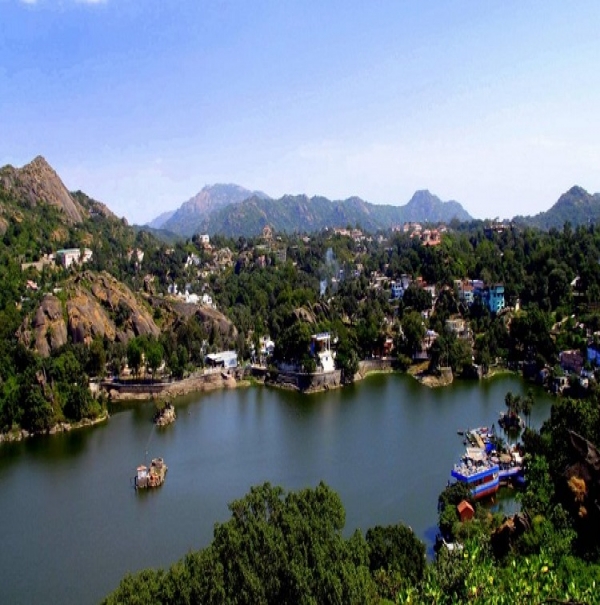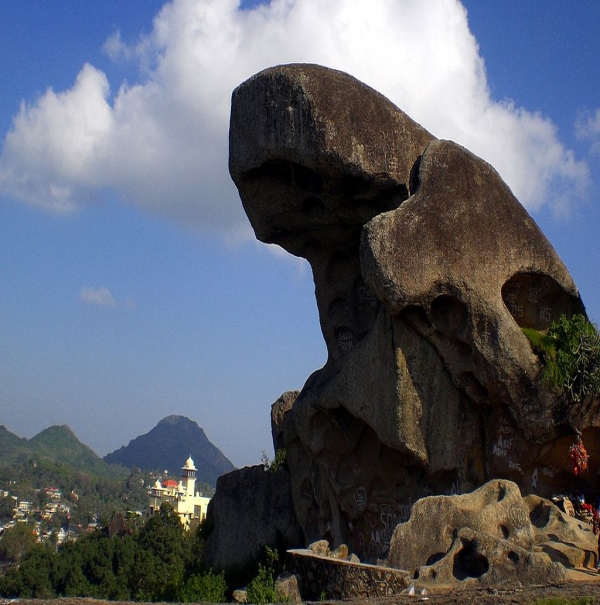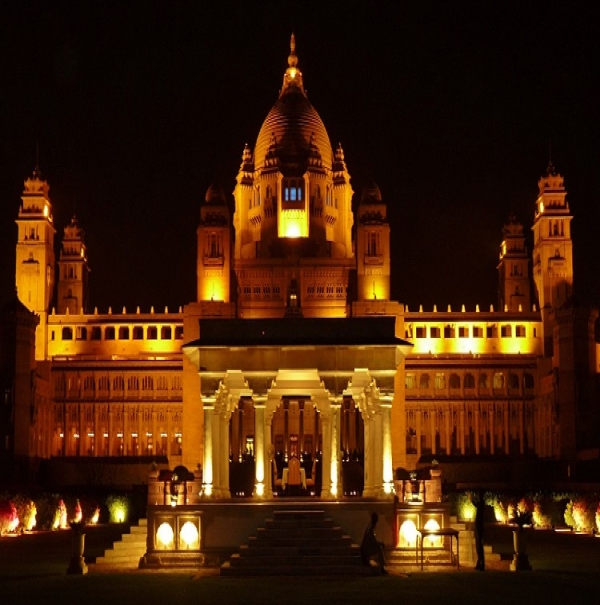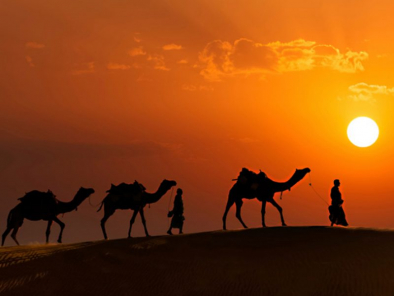
Sign Up
Already a member? Login
Rajasthan which is also known as the “Land Of maharajas”. The glory of the state is retained by its majestic places, forts and monuments. The vibrant culture and rich heritage of this princely state draw innumerable tourist from across the globe. Its major attractions include the Dilwara Temple, National Park, Forts, Lake Palaces, Deserts, Haveli, Temples, Food, Puppet Shows, Shopping, Fairs & Festival, Art and Culture, Folk Dance, Flora & fauna etc.

Arrival at Abu road, proceed to Mount Abu, the state’s only hill station stands at a height of 1722 metres above sea level, and is embraced by lush green hills of the Aravalli range. Studded with a colourful mix of rustic abodes of tribal communities and posh houses inclusive of British style bungalows and royal holiday lodges, Mount Abu appears to be no less than a wonder in this dessert state. Covered in vast stretches of green forests, serene lakes, and effusive waterfalls, this region allows you to revel amidst panoramic vistas, all year round. On arrival check in into hotel. Later proceed for visit to Nakki Lake: The beautiful Nakki Lake is surrounded by hills on all sides and boating here is a blissful experience. This is the only artificial lake in India to be created at a height of more than 1200m from sea level. Nakki Lake Market is Mount Abu's main shopping market. It spreads across the road leading to the popular Nakki Lake with tiny shops and stalls. The market is known for local Rajasthani handicrafts like bandhaani clothes, cotton and silk Jaipur quilts, handmade dolls, handbags, paintings and leather goods.


This morning after breakfast Proceed for Mount Abu local sightseeing - Dilwara temples The Dilwara temples, located about 3 kms from Mount Abu, were mainly built by Vastupal and Tejpal, between the 11th and 13th centuries AD. Surrounded by lush greenery and located on a height above the surrounding areas, these temples are world famous for their stunning use of marble - many visitors consider these to be architecturally superior to even the Taj Mahal. Everything from the doors to the ceilings and the pillars are extremely intricately designed - at one point, the marble ceiling is so finely that it's actually translucent. Guru Shikhar is the highest peak of the Aravalli Range and lies about 15 kilometres from Mount Abu. The height of the peak is 1722 meters from sea level thereby promising a breathtaking view of the Aravalli range and the hill station of Mount Abu. Guru Shikhar translates to ‘The peak of the guru' and was named after Guru Dattatreya who is believed to have resided on the peak during his days as a monk. The cave atop the peak has been converted to a temple in his remembrance. Guru Shikhar is also home to the Mount Abu Observatory. After a 15-kilometre drive, you would need to climb a 300 steps to reach the top of Guru Shikhar Peak. Toad Rock is located south of Nakki Lake in Mount Abu, the Toad Rock is a colossal rock piece which looks like a toad about to jump into the waters of the lake. Known as the mascot of Mount Abu, this is one of the most frequented points in the itinerary of all visitors. To see the panoramic beauty of the surrounding lake and greenish hilly regions you can climb up the rock and capture the breathtaking scenery. The path to Toad Rock starts near the Nakki Lake and includes climbing 250 steps to the top. The pathway is nestled in lush greenery which makes for a calming walk, though some people might find it intimidating. The staircase is broken in parts, so the climb is not recommended for old people and toddlers. Sunset point, A destination is not complete without a Sunset point, and Mount Abu isn't an exception. The outlandish view of the rugged Aravali ranges, sunkissed by the radiating rays of the setting sun is what draws scores of tourists to this picturesque location near the famous Nakki Lake. The Sunset Point in Mount Abu is frequented by nature lovers who revel in the setting rays of the sun. This is a perfect picnic spot as one can admire the magic of the coloured sky as the sun sets, painted in hues of red and orange, contrary to the rich greenery of the Aravali Ranges in the background. Overnight stay at Mount Abu hotel.



After breakfast drive to Udaipur. Udaipur is known as the Venice of the East. It has to its credit some beautiful temples and gardens. It lies in the GirwaValley amidst the Aravali hills of South Rajasthan. The City is considered a Romantic city with its lakes, gardens, temples and –an Oasis in the Thar Desert. Upon arrival transfer to the Hotel & Check In. Later enjoy Boat ride (On Direct Payment) on Lake Pichola. Lake Pichola derives its name from Pichola Village. Maharana Udai Singh enlarged the lake after he founded the city of Udaipur. This picturesque 4 km long and 3 km wide lake encloses the Jag Niwas Island and the Jag Mandir. The City Palace extends along its eastern banks. Overnight stay at Udaipur hotel.



After breakfast Proceed to Udaipur local sightseeing visit to City Palace: One of the largest royal complexes in Rajasthan, the City Palace stands majestically on a promontory on the picturesque Lake Pichola. The complex boasts 11 constituents Mahals (palaces), with balconies, towers and cupolas, offering a breathtaking view of the lake and its surroundings. The Durbar Hall, which was used as a venue for formal occasions like state banquets and meetings, has most luxurious interiors highlighted by some of the largest chandeliers in the world. The Palace also houses a museum displaying a number of interesting artifacts. Jagdish Temple: Built in 1651 AD by MaharanaJagat Singh, Jagdish Temple is the largest and the most beautiful temple in Udaipur. Dedicated to Lord Vishnu, the temple is famous for its beautiful sculpted images and towering shikhara. The temple represents a fine example of Indo-Aryan architectural style. Sahelion ki Bari: The Sahelion-ki-Bari Garden was built in early 18th century AD as a retreat for ladies of the royal household to spend their time in leisure. The enchantingly beautiful Garden is famous for its lotus pool, fountains (in the shape of birds), lush green lawns, flowerbeds, and marble pavilions, offering a breathtaking view to visitors. Drive past FatehSagar Lake: The FatehSagar Lake is one of the most sparkling places to see in Udaipur. It is located in the north-western region of Udaipur and is the second largest artificial lake in the beautiful Udaipur city. It is surrounded by the massive Aravalli Hills and is well-known for the boating activities it offers. The lake is 44 feet at its deepest point and very serene. Tourists enjoy cycling or walking around the lake, especially in the evenings and there are many food stalls as well. Local Shopping Market: The ‘City of Lakes’ is a delight for shopping enthusiasts coming over from around the world. The local markets here have an alluring atmosphere and as soon as you enter a market, there’s absolutely nothing you would not want to buy. Udaipur is full of boutiques, shopping malls, and almost everything is available at a stone’s throw but the real charm lies in its dazzling local markets with beguiling handicraft items, ethnic jewellery, and authentic leather products. shopping in these markets is a lot more fun and lighter on the pocket than actually paying retail for similar items in big shopping malls and designer shops. Hatipol Market , BhatiyaniChohatta, Gulab Bagh Road, Bapu bazaar, Bada bazaar, Mochiwada etc. Overnight stay at hotel.



After breakfast check out from hotel & proceed to Jodhpur - is a city in the Thar Desert of the northwest Indian state of Rajasthan. Its 15th-century Mehrangarh Fort is a former palace that’s now a museum, displaying weapons, paintings and elaborate royal palanquins (sedan chairs). Set on on a rocky outcrop, the fort overlooks the walled city, where many buildings are painted the city’s iconic shade of blue. Once the capital of the Marwar state, it was founded in 1459 A.D. by Rao Jodha-chief of the Rathore clan of Rajputs who claimed to be descendants of Rama - the epic hero of the Ramayana. On arrival check in into hotel. Later visit to Umaid Bhawan Palace Voted as the Best Hotel in the world, Umaid Bhawan Palace is also a major tourist attraction in Jodhpur. Apart from being a heritage hotel, it is a museum and the residence of the Royal Family of the present owner, Raja Gaj Singh. Because of its location on the highest point in Jodhpur, the Chittar Hill, it is also referred to as the Chittar Palace. Overnight stay at Jodhpur hotel.



After breakfast proceed to local sightseeing . After rest, Visit Mehrangarh Fort, which was built by Rao Jodha in 1459. It has various pavillions beautifully decorated and at times filled like museums with the old royal artifacts. From the top of the fort one can get a bird’s eye view of the old city. You will notice the predominance of blue houses referred to as Brahmin houses - the colour being associated with the high caste. Also visit Jaswant Thada. It is a white marble memorial built by Sardar Singh in 1899 in memory of Maharaja Jaswant Singh II. The monument, in its entirety, is built out of intricately. carved sheets of marble. These stones are extremely thin and polished so that they emit a warm glow when the sun's rays dance across their surface. MOTI MAHAL Moti Mahal, as the name suggests, is the Pearl Hall where the royal families held their audience. The hall is known to have glass windows and five nooks that enabled the queens to listen to the proceedings taking place in the Sringar Chowki, The Royal Throne of Jodhpur. Dinner and overnight stay at Hotel.


After breakfast check out from hotel and proceed to Jodhpur Airport/ Railway station. End of the trip with sweet memories.


Destinations
Jodhpur, Jaisalmer
STARTING FROM
INR 17,999